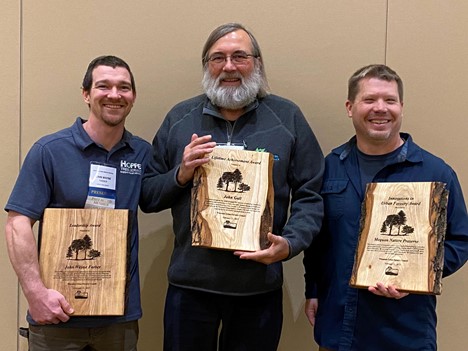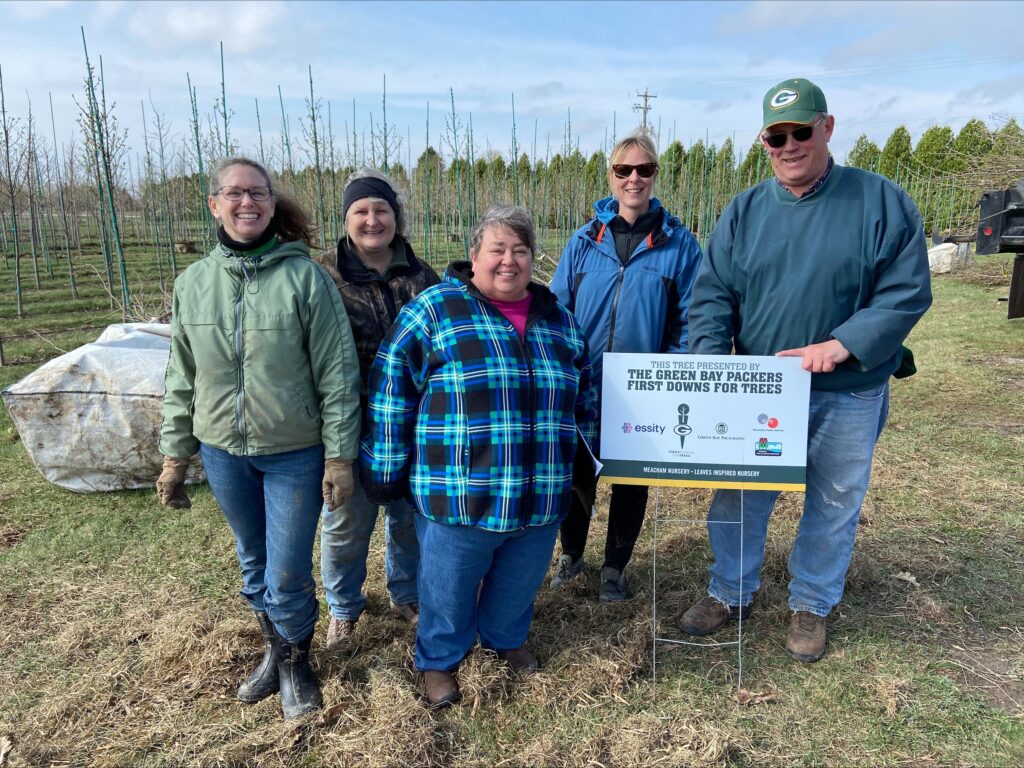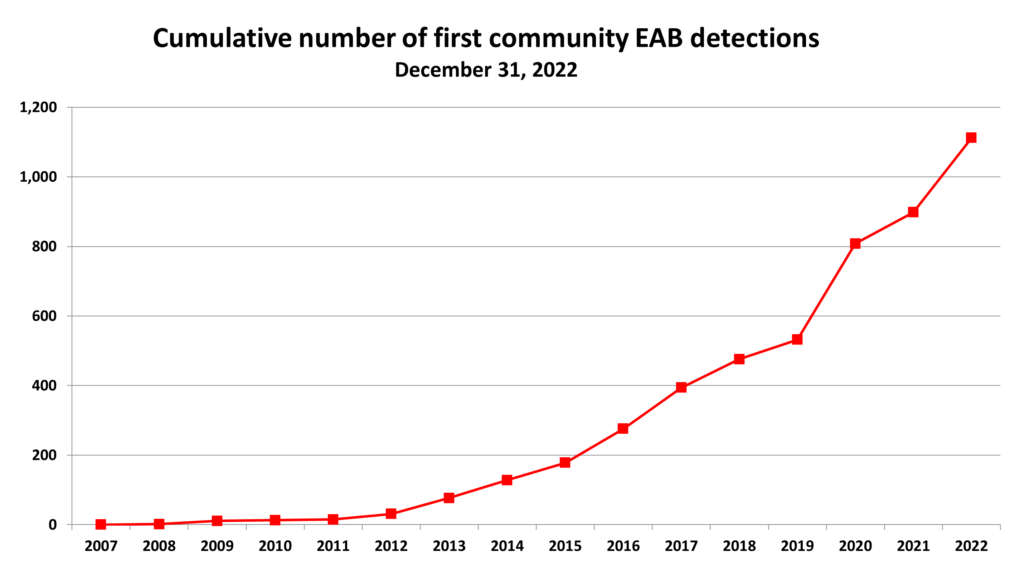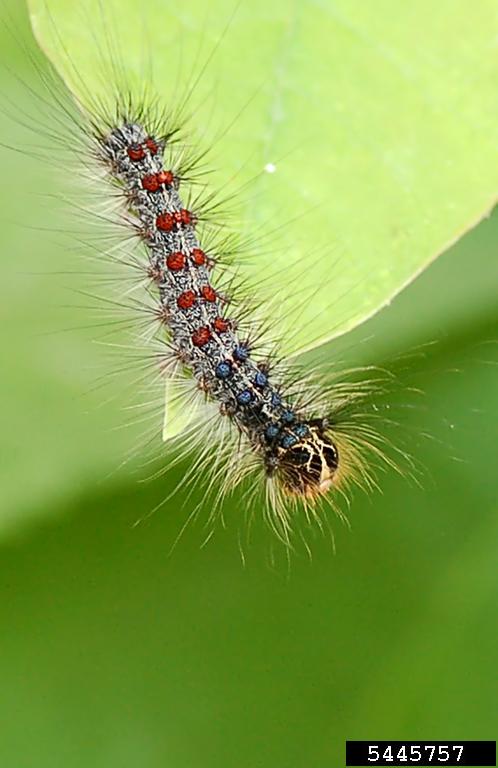By: Kirsten Biefeld, Urban Forestry Outreach Specialist
The Wisconsin Urban Forestry Council recently announced their annual awards honoring those dedicated to protecting, preserving and increasing the number of trees that line city streets, fill community parks and beautify neighborhoods throughout the state.
The Wisconsin Urban Forestry Council advises the Wisconsin Department of Natural Resources (DNR) on managing urban and community forest resources.
“Wisconsin plays a critical role in conservation, especially when it comes to trees! These awards honor individuals, organizations and communities for their hard work and dedication to trees and the benefits they provide,” said Linda Cadotte, Wisconsin Urban Forestry Council Award Committee Chair. “It’s an honor to learn more about the incredible work happening around our state that helps support healthy community forests.”

The 2023 Urban Forestry Award winners. From left to right: John Wayne Farber, Leadership Award; John Gall, Lifetime Achievement Award; Cory Gritzmacher, receiving the Innovation Award on behalf of the Mequon Nature Preserve. Photo credit: Wisconsin DNR
Continue reading “2023 Urban Forestry Council Award Winners” →
 On April 20, the First Downs for Trees program celebrated its 13th year by distributing 403 trees to 16 Brown County communities for planting. First Downs for Trees is a cooperative effort between the Wisconsin Department of Natural Resources (DNR), the Green Bay Packers, Wisconsin Public Service (WPS) and corporate sponsors Essity and Green Bay Packaging, Inc.
On April 20, the First Downs for Trees program celebrated its 13th year by distributing 403 trees to 16 Brown County communities for planting. First Downs for Trees is a cooperative effort between the Wisconsin Department of Natural Resources (DNR), the Green Bay Packers, Wisconsin Public Service (WPS) and corporate sponsors Essity and Green Bay Packaging, Inc.

 This year, Arbor Day will be observed in Wisconsin on Friday, April 28. Please see below for some tips for planning your own celebration.
This year, Arbor Day will be observed in Wisconsin on Friday, April 28. Please see below for some tips for planning your own celebration. Keep reading for a variety of ideas with differing levels of involvement, from in-person events to social media and more. Feel free to use none of these ideas or all of them and change them in any way you like. Use them as a starting point and make them your own or post them as-is.
Keep reading for a variety of ideas with differing levels of involvement, from in-person events to social media and more. Feel free to use none of these ideas or all of them and change them in any way you like. Use them as a starting point and make them your own or post them as-is.

